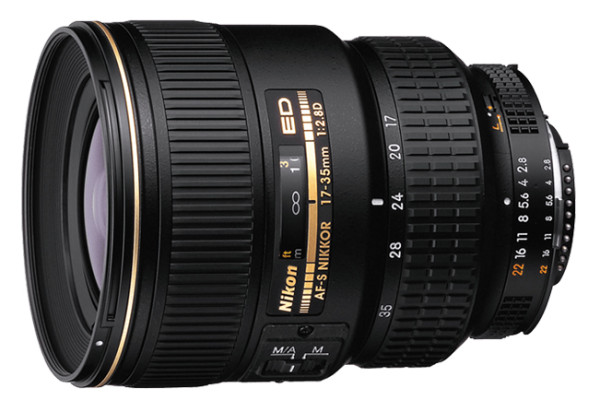Corey,
I have a Nikon D750 and I’m looking to build out my lens quiver. What is your favorite wide-angle zoom lens?
Keep up the good work!
—Martin
Having to choose between favorite lenses is like having to choose between favorite foods. And in this analogy, I want to have my cake and eat it, too. For me, the two wide-angle zoom lenses that come to mind are the Nikon AF-S NIKKOR 16-35mm f/4G ED VR Lens and the Nikon AF-S NIKKOR 14-24mm f/2.8G ED Lens.
I know it’s a cop-out to choose two lenses. If you held me up against the wall, put a gun to my head, and said, “Which one is it gonna be, tough guy?”—please don’t actually do this, by the way—then I would probably have to choose the 16-35mm f/4.
 The 16-35mm f/4 is awesome. Razor sharp. Lightweight. Relatively compact. With the VR built in, it transitions from still to video like a champ, and holds up at slow shutter speeds.
The 16-35mm f/4 is awesome. Razor sharp. Lightweight. Relatively compact. With the VR built in, it transitions from still to video like a champ, and holds up at slow shutter speeds.
I would say that 75% of the time, I’m on the 16-35mm f/4. Also, keep in mind that because today’s cameras have such great ISO sensitivity, I’m less concerned about having an extra stop or two aperture. Especially if I’m shooting in daylight, it’s a non-issue.
But then, there are those special occasions when I really want that extra stop and that ultra-wide-angle look of the 14-24mm f/2.8. Shooting indoors and in dark/night environments, you can get some fantastic stuff with this lens. There are some issues to be aware of, though. The 14-24mm f/2.8 is a much heavier and more expensive piece of glass. It has an exposed front element that can be tough to protect in adventurous environments. This lens is less of an all-around wide-angle zoom workhorse, and more of a specialized high-precision, razor-sharp tool.
 There’s a third, older lens that I also use quite a bit, too. And that’s the Nikon AF-S Zoom-NIKKOR 17-35mm f/2.8D IF-ED Lens. I bring this lens if I’m going into the mountains, and I need to be really compact and really light, but also need the speed of some fast glass. It’s very rugged, and might be the “best of both worlds” lens that you’re looking for.
There’s a third, older lens that I also use quite a bit, too. And that’s the Nikon AF-S Zoom-NIKKOR 17-35mm f/2.8D IF-ED Lens. I bring this lens if I’m going into the mountains, and I need to be really compact and really light, but also need the speed of some fast glass. It’s very rugged, and might be the “best of both worlds” lens that you’re looking for.
 Since you’re shooting on the Nikon D750, if you stay within the Nikon NIKKOR lens family, you can’t really go wrong. Hopefully you can have your cake and eat it, too.
Since you’re shooting on the Nikon D750, if you stay within the Nikon NIKKOR lens family, you can’t really go wrong. Hopefully you can have your cake and eat it, too.

2 comments
Corey – Thanks for sharing this. Love your posts. I have yet to shoot on the Canon equivalent of these wide angle IS lenses, but the potential seems great. Keep up the good work Corey!
Dave – I shoot Canon and own the Canon 16-35 F4 L. It is a razor sharp lens – really great contrast and colour too. I replaced the 17-40mm F4L with it about a year ago. I used to think the 17-40mm L was good – but the 16-35mm F4 is noticeably sharper. The image stabilisation is also really good and I’m able to hand hold some very slow shutter speeds compared to the 17-40mm F4.
If you want a wider aperture (without IS), there is a 2.8 16-35mm version (Mk II) but it’s nearly twice as expensive, has no image stabilisation and is a bit heavier as well.
I believe you can pick up the 17-40mm L now fairly cheaply since the 2 16-35mm lenses came out recently and there has been a price drop in that model. If you have a lot of money to spend, and are not going in the mountains too much there is also the ultra-wide angle zoom – Canon EF 11-24mm f/4L USM to consider. On that lens (which isn’t fisheye) the front of the lens is curved so you can’t put a protective filter on it. So it would be more risky to use it when doing adventure photography and in general you have to be more cautious when handling it. All reports are that it is an awesome lens. For me, the price and fact that I’d have to be too careful with it does not make it my first choice for a next lens to buy for myself – but it would be fun to rent one for some ultra wide shots some time.
Comments are closed.